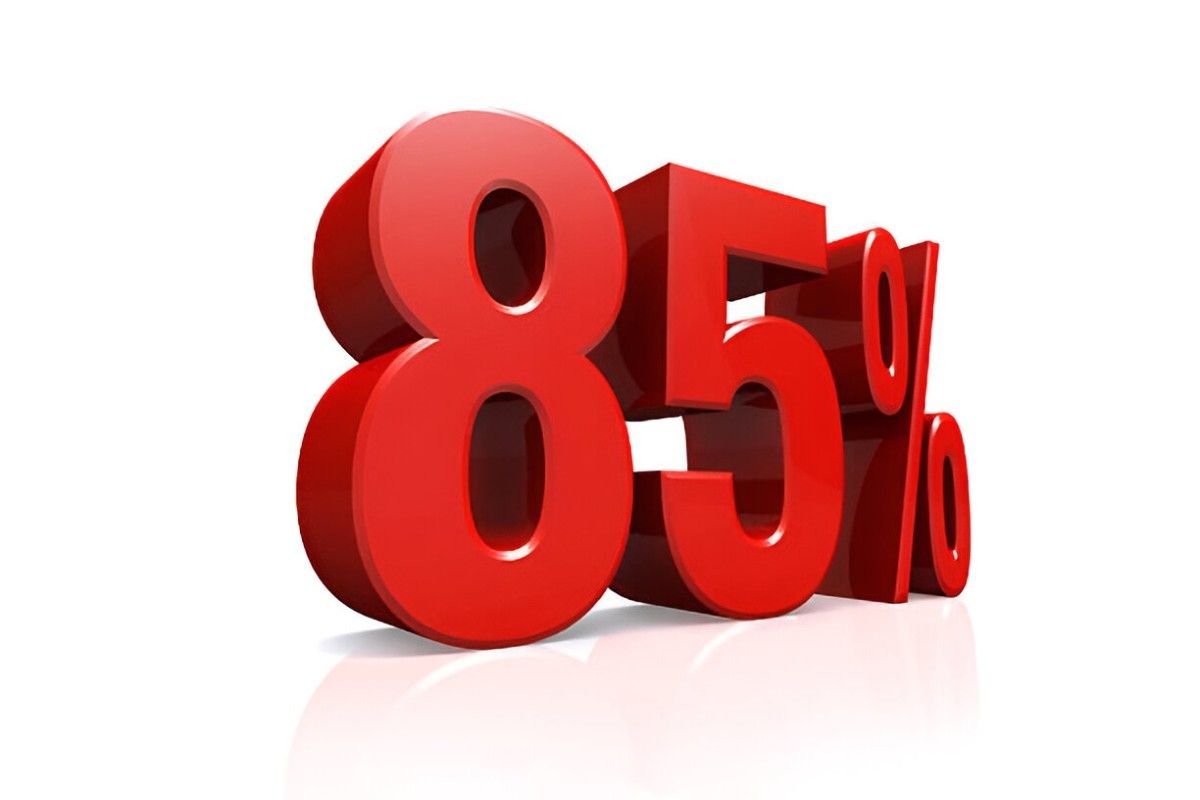Most investors think in binary terms—either aggressive (100% stocks) or conservative (60/40). But the 70-85% equity allocation range offers a compelling middle ground for those seeking strong growth with managed volatility. In this guide, I’ll analyze why this allocation works, how to implement it with mutual funds, and when it makes sense for your portfolio.
Table of Contents
Why 70-85% in Stocks? The Goldilocks Zone
This allocation range is ideal for investors who:
- Want higher returns than 60/40 but less risk than 100% equities
- Have a 10+ year time horizon
- Can tolerate 20-30% drawdowns (vs. 40%+ in all-stock portfolios)
Historical Risk/Reward Profile (1972-2023)
| Allocation | CAGR | Max Drawdown | Recovery Time |
|---|---|---|---|
| 100% Stocks | 10.2% | -50.9% (2008) | 6+ years |
| 85/15 | 9.7% | -38.1% | 4.5 years |
| 70/30 | 9.1% | -22.3% | 3 years |
| 60/40 | 8.7% | -20.1% | 2.5 years |
Data: Portfolio Visualizer, S&P 500 & Aggregate Bond Index
Key Insight: Moving from 70% to 85% equities historically added 0.6% annual returns while keeping drawdowns below 40%.
Building Your 70-85% Equity Portfolio
Core Equity Holdings (70-85%)
- U.S. Total Market (50-60%)
- VTSAX (Vanguard) or FZROX (Fidelity)
- Captures small/mid/large caps in one fund
- International Stocks (20-25%)
- VTIAX (Vanguard) or FTIHX (Fidelity)
- Emerging markets included for diversification
- Optional Satellite (5-10%)
- REITs (VGSLX) or Small-Cap Value (VSIAX)
- Only for investors who want factor tilts
Fixed Income (15-30%)
| Bond Type | Purpose | Fund Examples |
|---|---|---|
| Intermediate Treasuries | Crash protection | VFIUX |
| TIPS | Inflation hedge | VAIPX |
| Short-Term Corporates | Yield + stability | VSCSX |
Pro Tip: The closer you are to 85% stocks, the more you should weight bonds toward shorter durations (less interest rate risk).
Dynamic Allocation: When to Shift Within 70-85%
Move Toward 85% When:
- You’re >15 years from retirement
- The Fed is cutting rates (bond returns likely to fall)
- CAPE Ratio < 25 (stocks reasonably valued)
Pull Back to 70% When:
- <10 years from retirement
- Yield curve inverts (recession signal)
- CAPE Ratio > 30 (overvalued market)
Example Calculation:
If the CAPE ratio rises from 25 to 32, you might:
- Sell 5% of equities: \$100,000 \times 0.05 = \$5,000
- Buy bonds: \frac{\$5,000}{VBTLX\ NAV} = \text{X shares}
Tax Efficiency Strategies
Placement Matters
| Account Type | Best Holdings |
|---|---|
| Taxable | Total Stock Market (VTSAX) |
| IRA/401(k) | Bonds (VBTLX), REITs (VGSLX) |
| Roth IRA | High-growth (small-cap value) |
Why?
- Stock funds generate qualified dividends (lower taxes)
- Bond income is ordinary income (better in tax-deferred)
Rebalancing: The Secret Sauce
A 2022 Vanguard study found that annual rebalancing added 0.4% annual returns to 70-85% portfolios over 30 years.
Sample Rebalance (85/15 → 80/20 After Market Drop)
- Pre-Crash: $850K stocks, $150K bonds
- Post-Crash (-20%): $680K stocks, $150K bonds
- New Allocation: 82/18
- Action: Move $24K from bonds to stocks
- \frac{\$830K \times 0.85 - \$680K}{\$830K} = \$24,500
Result: You bought stocks at a discount while maintaining risk control.
Who Should Use This Strategy?
Best For:
✅ Age 35-55 (accumulation phase)
✅ $100K-$2M portfolios (large enough to need bonds)
✅ DIY investors who rebalance annually
Poor Fit For:
❌ Retirees (may need <60% stocks)
❌ <$50K portfolios (better off with target-date funds)
Alternatives to Consider
| Strategy | Equity % | Volatility | Best For |
|---|---|---|---|
| 60/40 | 60% | Low | Nervous investors |
| Permanent Portfolio | 25% | Very Low | Crash-proofing |
| All Weather | 30% | Medium | Inflation protection |
Final Recommendation
The 70-85% equity allocation is the sweet spot for growth-focused investors who understand that some bonds improve risk-adjusted returns. By:
- Using low-cost index funds
- Rebalancing strategically
- Adjusting allocation based on valuations
…you can capture 90%+ of stock market returns with 60% of the downside.





